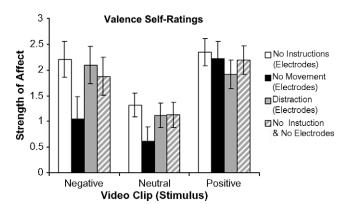Is it good to fake a smile?
Is the best thing with smiling, “fake it til' you make it“. Or does this just lead to more repressed negative emotions that will someday boil over?
This post discusses the reasons we fake a smile, when not to do it and how to do properly fake a smile. Let's get to it…
I used to fake smiles and pretend I wasn't upset or anxious. The result wan't pretty – I felt worse for longer and developed psychosomatic symptoms like irritable bowl syndrome and sciatica.
The science replicates my experience; the NYT wrote an analysis of a relevant research study. The headline: “A Fake Smile Can be Bad for Your Health.”
Freudian psychotherapists would agree, believing that repressing one's negative emotions can cause mental illness.
On the other side, we have legions of self-help gurus and positive psychologists like Sonja Lyubomirsky ( the How of Happiness) telling us that we should, “act like a happy person” even when we're unhappy.
So which is it? Which side is right, and which should we do?
Should we be fake or authentic?
Neither – that's the wrong question. The reason there is so much disagreement on the subject is that the two sides are talking about different things.
Four different things, in fact:
- Repressing negative thoughts and feelings.
- Faking your body signals, like your posture and facial muscles.
- Changing your thoughts to be more positive and optimistic.
- Self-generating positive emotion.
Want the short answer on whether you should fake a smile? Here it is: Repression is bad; the rest are good.
The confusion comes from a lack of a clear terminology, and because repression can creep into potentially positive situations. Let me give two examples.
- You've just been fired from your job. You go see a friend. This friend is clearly uncomfortable with your sadness, so you fake a smile and try to suppress your negative thoughts. Faking a smile can actually improve your mood, but suppressing your negative thoughts will do the opposite. On balance, this friend is likely to worsen your mood.
- Now you go see another friend. This friend tells you to cheer up – suggesting that with your talent and tenacity, you'll be able to get another job in no time. You put on a fake smile, only half believing them, but start to feel a little bit more optimistic. There is no repression in this situation. You are actually replacing some of your negative self-loathing with positive optimism. Your fake smile will make you feel even more optimistic.
In both situations, you put on a fake smile, but the context was completely different. The science suggests your first friend worsened your mood, but your second friend improved it.
Let's walk through repression and faking body signals in more detail.
Repression is bad. Always let yourself feel your emotions.
This has been a core of psychology since the days of Freud.
There are a lot of things we can do with our negative emotions. Here are a few of the good ways to express your emotions.
- Write them down
- Express them verbally
- Work to change them
- Label them
- Cry them into your pillow
- Vent them to a friend
- Talk out your issues with the person who caused your negative emotions (do this carefully)
- replace negativity with positivity
- Practice gratitude to counteract negativity
- Remind yourself of the good things in life, and how small the negativity is in comparison.
Then, of course, there is repressing the negative emotions. I exclude this from the list since it is something you should never do. Repression is a plain bad idea. If you don't process emotion, it may continue to linger and worsen.
The headline I referenced before, “A Fake Smile Can be Bad for Your Health”, was summarizing the findings from tracking truck drivers. The study found that when truck drivers gave fake smiles their mood worsened. However, when they generated authentic fake smiles, their mood and productivity increased.1
Authentic fake smiles? What the heck am I talking about?
There are three contexts in which you can fake a smile:
- While thinking negative thoughts, you put on a smile for those around you.
- While putting your negative thoughts on hold, you put on a smile for yourself.
- While putting your negative thoughts on hold, you focus on the positive and spontaneously find yourself smiling.
This study focused on #'s 1 & 3. Indeed, #3 is the best. It's also really difficult, so, let's be lazy.
Fake your body signals.
Put your negative thoughts on hold, and then smile. That is not the same thing as repression. After you're feeling better, you can revisit your negative emotions. The positivity will provide you with perspective. In addition, 95% of the times I fake my body signals, I'm not unhappy – I'm just tired. But now, let's talk more about successful faking.
The facial feedback hypothesis suggests that our facial expressions influence our emotions. A simplification of the process:
Our spouse tells us that they love us –> emotion center A in the brain tells our facial muscles to form a smile –> our facial muscles form a smile emotion center B reads our face and sees a smile, and generates positive emotion
I'm sure this idea seems ridiculous to you. After all, why does the emotion center that generates positive emotion need to read our faces to determine our emotional state? Shouldn't it know itself?
Our brains are complicated. Let's just leave it at that. If it wasn't for multiple supporting studies, I wouldn't believe it either:
- In one study, an fMRI scan was done of participants before and after they received a Botox injection. When asked to imitate angry facial expressions, participants showed less brain activation in the brain regions involved in emotional processing and experiencing after they had been injected with Botox.2
- In another study, participants watched negative, neutral, and positive video clips (e.g. a comedy clip vs. a clip of a man eating a live worm). After each clip, they were asked to report how positive or negative they felt (from -4 to 4). The sub-group which was instructed not to move their face had a 100% better response to the negative clips.3 In other words, when emotion center B did not detect a frown, it did not generate strong negative feelings.
Going back to the study of truck drivers, if they had held a pencil in their mouth using their teeth for a few hours, they actually might have felt better. In yet another study, participants who activated the muscles involved in forming a smile by holding a pencil with their teeth actually generated positive emotion.4
So let's talk about what you can do to benefit from this biological quirk.
A Fake Smile to Generate Positivity
I don't know about you, but I am always tired after lunch. Always. So I'm making it a habit to do four things after I've finished eating:
- Laughing for as long as I can.
- Putting on some energetic music and bobbing my head.
- Sitting up straight with good posture.
- Smiling for at least 10 minutes, regardless of how tired I feel. I used the pencil trick a few days ago because I was just that tired.
You might be tempted to tuck away this “fake smile” trick to use on a rainy day, but the best way to make use of it is to incorporate it into your daily schedule. Scientists have not yet explored if faking a smile produces weaker or stronger results the more you do it, but I believe this activity is a skill, just like cultivating gratitude: the more you do, the stronger the benefits.
So, pick a trigger and pick an action.
- As a trigger, you can use a time of day, a mood, a smell, or even a person.
- As an action, you can act happy, fake a smile, bob your head, hold a pencil with your teeth, or straighten up your posture.
Not only will this activity make you happier and more energetic, because of the way our brains work, we will associate that additional happiness and energy with our trigger, not with our action.
Finally, one proven way to improve your happiness and life satisfaction is to focus on goals that truly matter. To get started, check out this FREE printable worksheet and a step-by-step process that will help you set effective SMART goals.
References
- The Claim: A Fake Smile Can Be Bad For Your Health.
- Hennenlotter et al., 2008
- How does facial feedback modulate emotional experience?
- Dimberg, U., & Söderkvist, S. (2011). The Voluntary Facial Action Technique: A Method to Test the Facial Feedback Hypothesis. Journal Of Nonverbal Behavior, 35(1), 17-33. doi:10.1007/s10919-010-0098-6



when other people google fake smile this comes up and in general white male with a fake smile just shoves us in that circle of judgement I’m most loyal friend and this I find offense.
I must say it was hard to find your page in search
results. You write interesting content but you should rank your blog higher in search
engines. If you don’t know how to do it search on youtube:
how to rank a website Marcel’s way